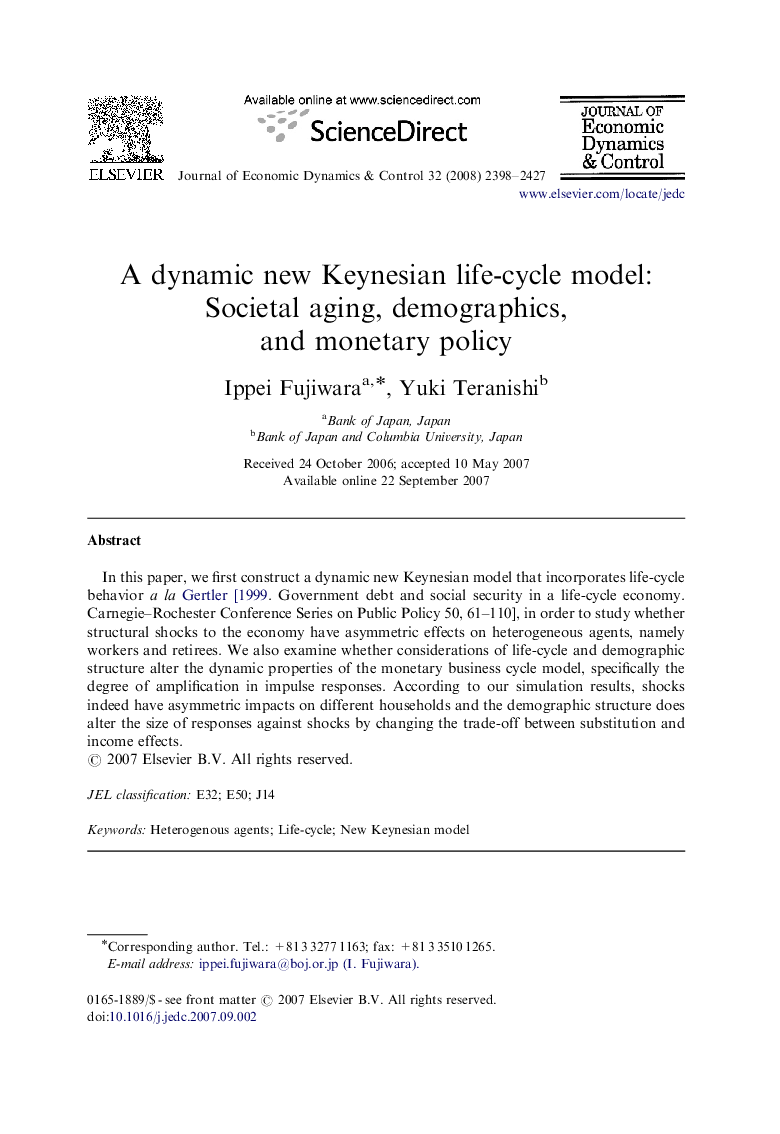| Article ID | Journal | Published Year | Pages | File Type |
|---|---|---|---|---|
| 5099241 | Journal of Economic Dynamics and Control | 2008 | 30 Pages |
Abstract
In this paper, we first construct a dynamic new Keynesian model that incorporates life-cycle behavior a laGertler [1999. Government debt and social security in a life-cycle economy. Carnegie-Rochester Conference Series on Public Policy 50, 61-110], in order to study whether structural shocks to the economy have asymmetric effects on heterogeneous agents, namely workers and retirees. We also examine whether considerations of life-cycle and demographic structure alter the dynamic properties of the monetary business cycle model, specifically the degree of amplification in impulse responses. According to our simulation results, shocks indeed have asymmetric impacts on different households and the demographic structure does alter the size of responses against shocks by changing the trade-off between substitution and income effects.
Related Topics
Physical Sciences and Engineering
Mathematics
Control and Optimization
Authors
Ippei Fujiwara, Yuki Teranishi,
